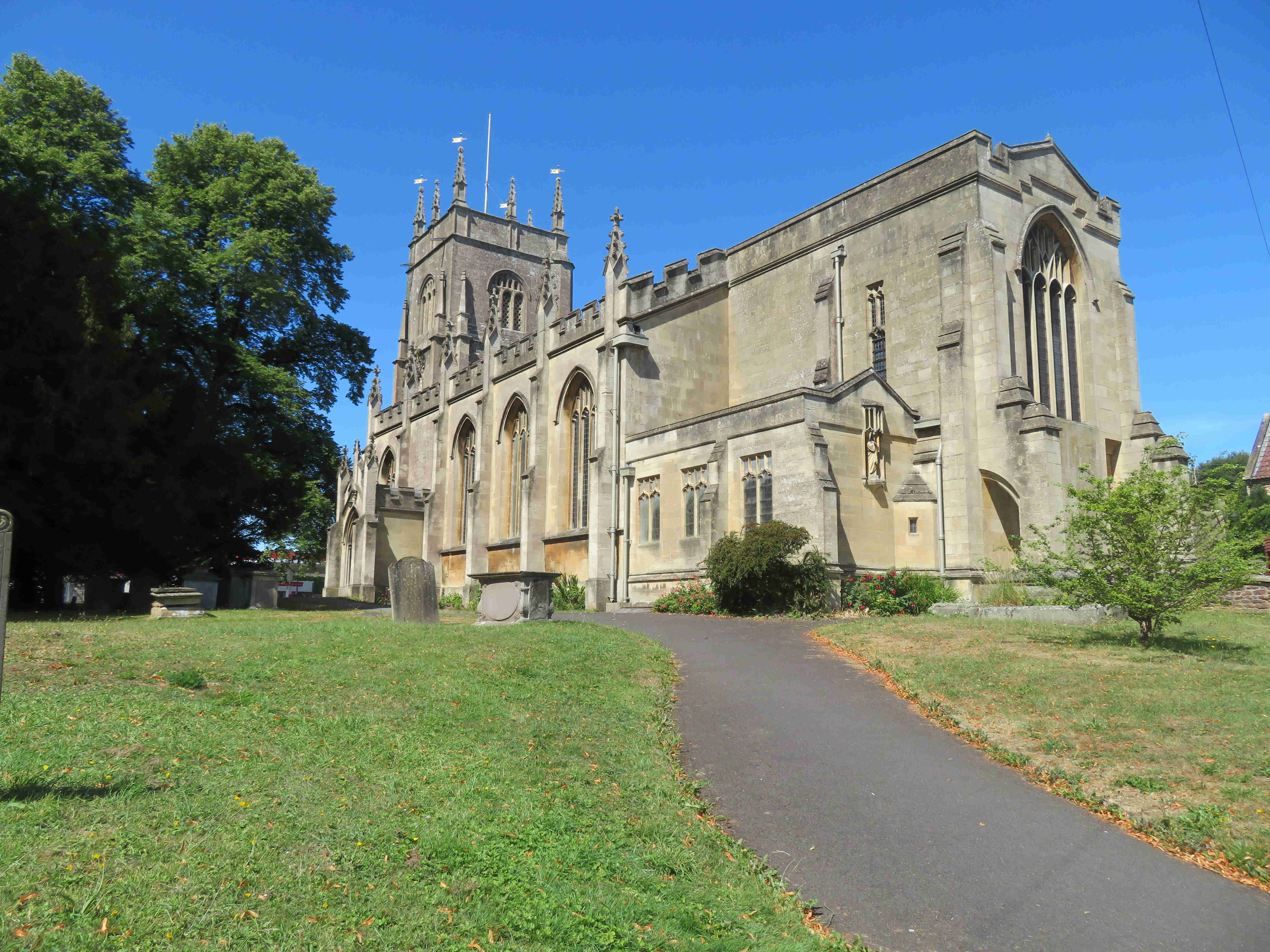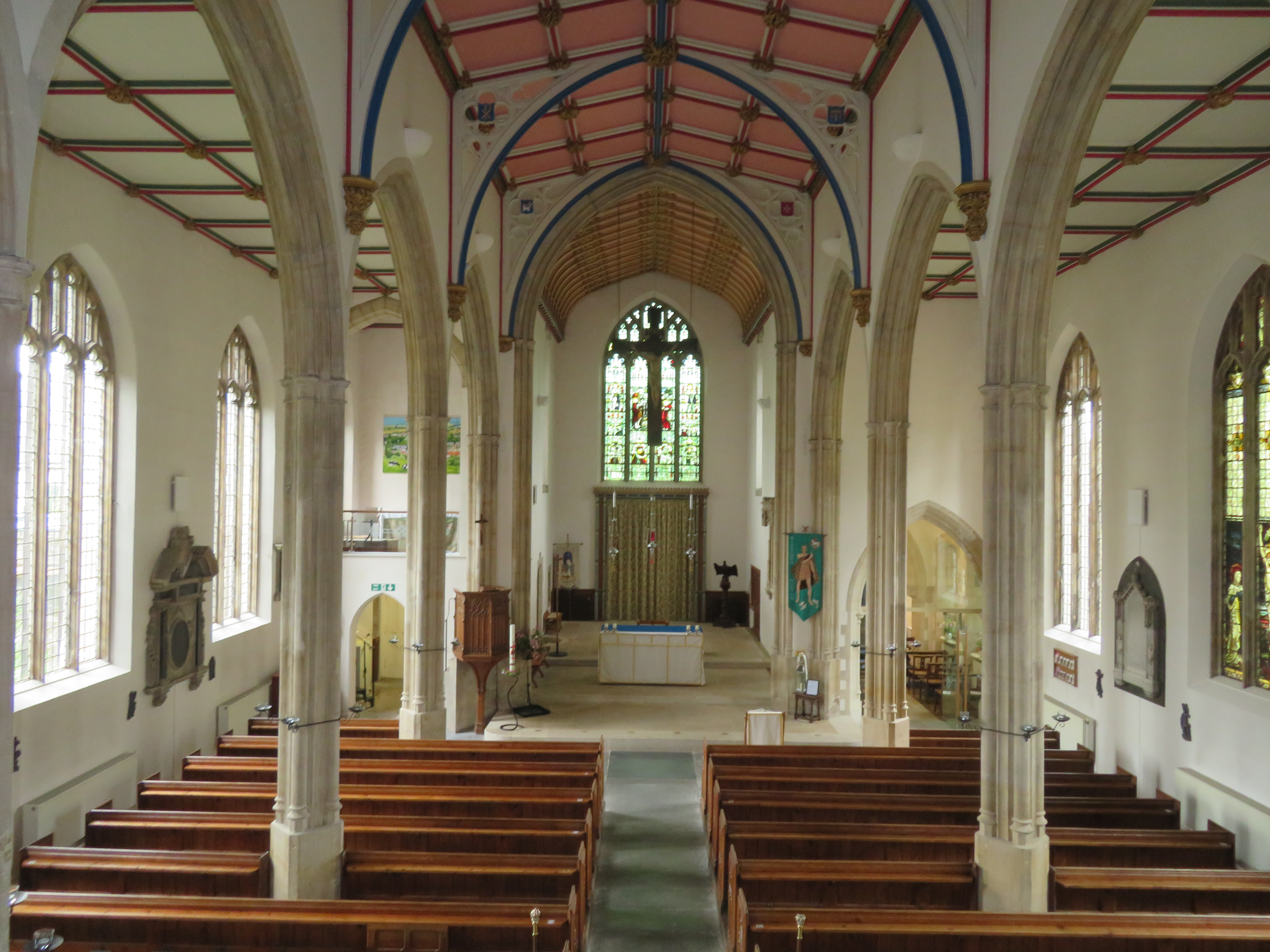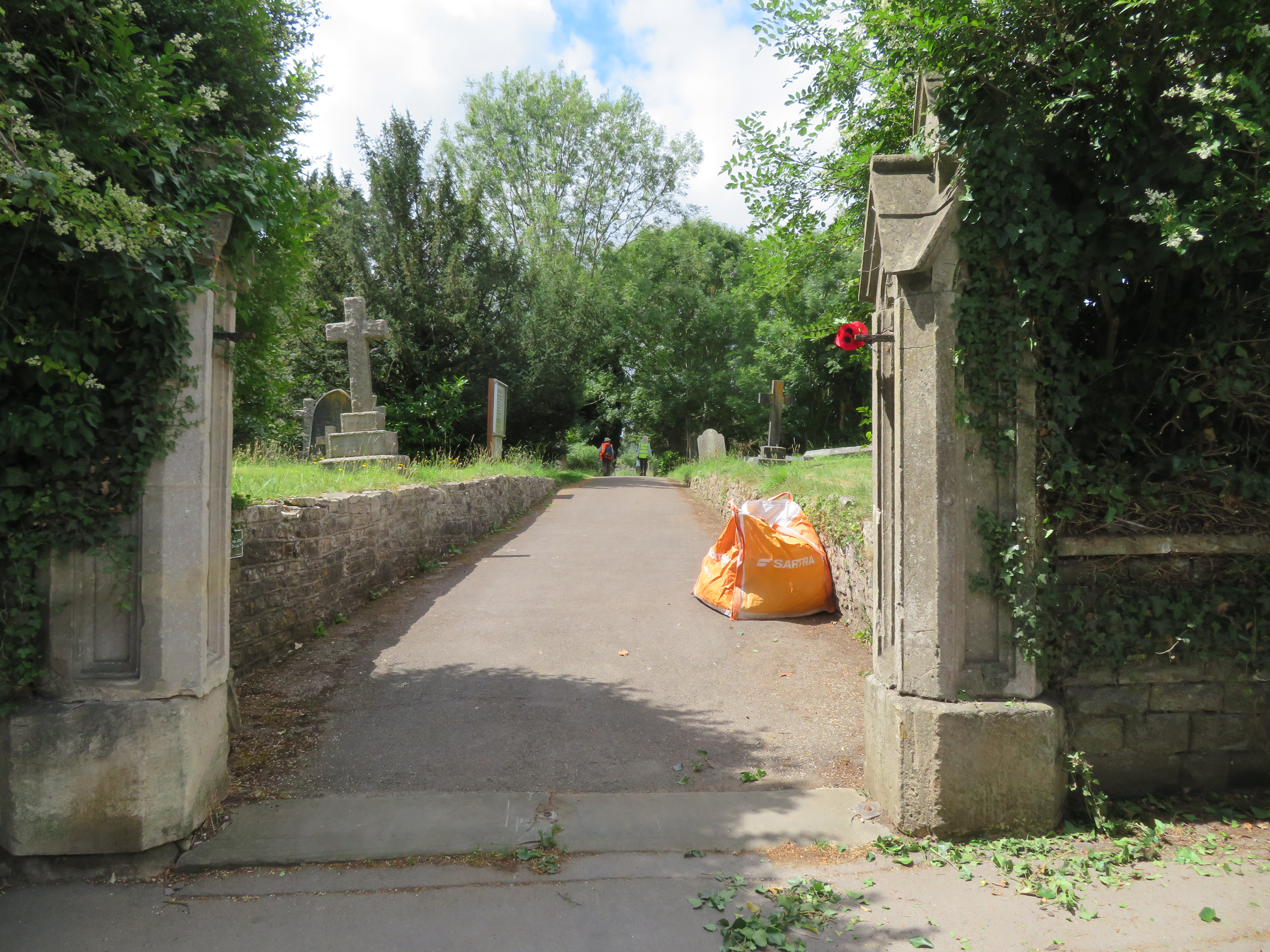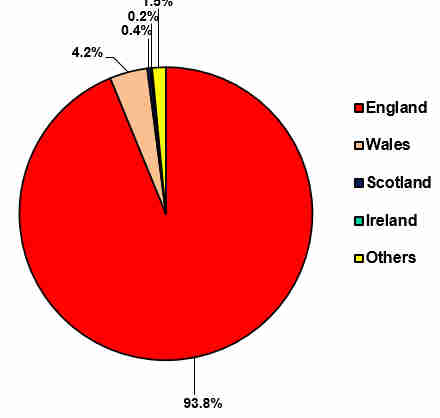
From The History and Antiquities of the County of Somersetshire by Rev John Collinson Vil II (1791) pp149-152:
MIDSUMMER-Norton Alias NORTON-CANICORUM, or NORTON-FRIARS A Parish situated ten miles northeast from Wells, nine west from Bath, and fourteen south from Bristol. It is of large extent, being seven miles in length, from Nettlebridge to Rodford-Bridge near Camerton; and contains about two hundred and ninety houses, and upwards of fifteen hundred inhabitants, including the three following hamlets: 1 WELTON, situated northeastward 2 CLAPTON, northwestward 3 DOWNSIDE, near Chilcompton, southwest The church and principal part of the parish lies in a woody vale, screened from the north by a ridge of high lands, and watered by a pleasant stream. The lands are inclosed, and divided between pasture and tillage; some of the meadow is very rich, and considerable part of the arable has been improved by marl. There are two coalworks in the parish, in which many of the poor are employed. These coals are sold at four-pence a bushel at the pit’s mouth. A fair of cattle, pigs, and pedlary-ware, is held here on the 25th of April. This was another of the Bishop of Coutances manor, and held of him by Ulveva. . . . The church, dedicated to St. John the Baptist, is a very ancient edifice, as is evident from the circular arched door-ways, with uncouth zigzag mouldings, and other such decorations, characteristic of the Saxon and Norman stile. It consists of a nave and side ailes, with a handsome tower at the west end of more modern erection than the rest, having been built in the year 1674. This tower contains a clock, and eight bells, three of which were given by King Charles the Second, whose statue in a full-bottomed wig and regalis stand in a niche on the south side. At the corner of the south aile stands the wooden effigy of a man in armour, which formerly lay under the singers’ gallery, on a raised tomb, long since demolished. It is vulgarly called by the inhabitants Jack o’Lent; but tradition says it belonged to one of the name of Warknell. Many of the Harbords of Welton and the Bulls, were interred here.
The Imperial Gazetteer of England and Wales 1870-72 by John Marius Wilson has for Midsomer Norton:
The church was rebuilt in 1830; consists of nave, aisles, and chancel, with a tower; has, in a niche of the tower, a statue of Charles II.; and contains a fine monument to Major Savage, and several mural tablets. The King Charles II connection is said to arise because, when visiting, and hearing that some of the bells of the church were cracked, he had them recast at his expense.

In 1856 consideration was given to a churchyard extension (Wells Journal of Sat 12 Apr 1856 p8.) At some point the interest in establishing a cemetery for non-Anglicans managed by a burial board and the need of the Anglican church for an extension to its churchyard seem to have come together in the setting up of a cemetery run by a burial board that catered for both Anglicans and non-Anglicans. This must have occurred in 1856 as the Anglican parish register has an entry dated 13 Oct of that year which noted that it was the first in the ‘new churchyard’. This extension is detached from the old churchyard and is on the western side of Church Lane (B3355).
The church was restored in 1878 supposedly to make it into a ‘good style’. The bishop was present at the reopening of the church and the vicar is reported to have said ‘He supposed all those present were Church and State men, and he hoped all his parishioners were.’
The new churchyard/cemetery was extended in 1902. This was reported on in the Bath Chronicle of Thu 16 Oct 1902, p5 col f which includes 'Half-an-acre has been annexed from allotment gardens at the back of the churchyard. The property belonged to a local charity but the Charity Commissioners gave their consent to its acquisition on equitable terms, and' the total cost, including levelling enclosing with neat iron railing, has been £150. This, it is calculated, will be sufficient space for the next thirty years and more. The additional land was solemnly dedicated yesterday (Wednesday) afternoon by the Lord Bishop of the Diocese. ' The article was reproduced in the Somerset Standard of the following day. The first reference in the press to a burial in the new part of the cemetery was in the Somerset Standard of 14 Feb 1902. The individual was “a life-long member of the Methodist Free Church” implying the ‘unconsecrated’ section was open prior to the consecration of the Anglican section.
By the 1930s the cemetery had become full and, after re-use of some of the older plots, the cemetery was extended westwards twice. As reported in the Midsomer Norton Radstock & District Journal of 18 Mar 2014: Midsomer Norton Town Council is investigating the possibility of a new Town Cemetery and is asking for the views of local residents on the emotive subject, plus seeking potential landowners to come forward.

Cemetery entrance
Plot Numbering
A major distinction is made between the old churchyard (‘O’) and the new churchyard (‘N’) or cemetery. Thereafter is the area (for some parts), row and then plot.
Churchyard
There is no surviving grave register for the churchyard listing for each grave who was buried there. The burial register doesn’t have plot numbers for the churchyard. As a result, it is only possible to refer to the surviving memorials by (row, plot) where the ‘plot’ is a sequence number within a row based on surviving memorials.
Cemetery
The burial register has about 270 entries for which there are plot numbers as annotations in the margins. These are for burials in the period 1856-1866. The row letters are from A to J and the plot numbers are in the range 1-30. Comparing the names on surviving memorials with these entries established that the rows and plots refer to the oldest part of the cemetery by the entrance. When some of these plots were reused another numbering scheme was used.
The burial book listing of 1995 (see below) relates to the cemetery and not the churchyard. It has the plot numbers against the names. These are in the form (plot/row/grave). The ‘plot’ is slightly deceptive as it refers not to the graves but to the areas of the cemetery as it was expanded progressively with ‘plot 1’ by the entrance, then ‘plot 2’ as an extension to the west of this, and ‘plot 3’ west of plot 2. These are equivalent to the more conventional sections. A fourth section at the western part of the cemetery uses a simple (row, plot) scheme for the numbering with the row as a single or double letter (A-Q, AA-SS). A later addition on higher ground (‘HG’) has a mixture of numbering schemes which has been simplified to a (HG.row,plot) scheme.
To confuse matters the burial registers and the burial book listing have an overlap for the oldest part but the numbering schemes differ. When parts of the old part were reused another numbering scheme based on P1.N<row>.plot and P1.S<row>.plot was used for rows north and south of the path and some of the numbering is anomalous. Also for the cremation memorials areas, the numbering scheme differs between burial book and registers and many annotations in the burial register just indicate that it is a cremation plot without specifying which of the three such areas. The survey has allowed some of these to be resolved.

Occupants
The age profile has 33% aged under 11 and 21% aged over 70. The profile for a series of burial places in Bath has between 40 to 50% aged over 70 for the richer areas and between 10 and 20% for the poorer areas (see the Summary page for the Bath Burial Index).

Occupations have been found for over 300 individuals. This information comes mainly from census entries and the 1939 Register. The majority (about 70%) either worked in the coal mines in one capacity or another (46%) or were labourers (24%) with a a further 8% as craftsmen.

The birth country has been found for over 1000 individuals. As might be expected, the country is mainly England at 94%. Given the importance of coal mining to the local economy, 4% were born in Wales and census entries show a movement to and fro between the town and the South Wales coalfields. There are only a few from other countries.
The churchyard has only a few dozen surviving memorials. The cost of a memorial was out of reach of most people. For the original part of the cemetery (1856-1902) the memorials are also sparse and some areas without memorials were reused. Memorials became more common in the 20th century but there are areas where they are sparse.
Limitations
The burial register has an annotation that it was ‘neglected from 1773 to 1783’ and actually resumes in Dec 1783.
The burial register for the period 1794-1812 has very few ages. The frequency of specifying ages increases from around 1800 when there was a controversy about a proposal to introduce national civil registration of births, marriages and deaths rather than relying on parochial records of baptisms, marriages and burials
The locations of graves is not comprehensive and there is no information for the churchyard itself.
The burial registers should be the definitive record of the burials. Even after 1880 when it became possible to be buried without an Anglican service, the register would have the name of the officiating minister or specify ‘no service’. The registers certainly have examples of non-Anglican clergy as the officiating minister, the entry specifying the name and position eg ‘Methodist minister’, ‘vicar of Westfield’, ‘Dom Martin Salmon OSB’, ‘Peter A Fryer Methodist minister (Radstock)’. Nonetheless, the registers for Midsomer Norton need to be considered as less than totally reliable. There are some entries which are in the burial book but not in the burial register.